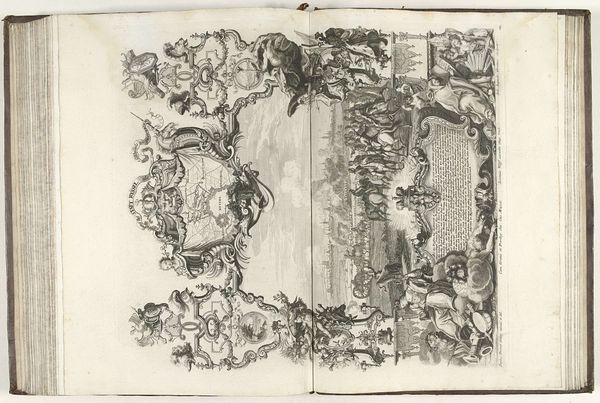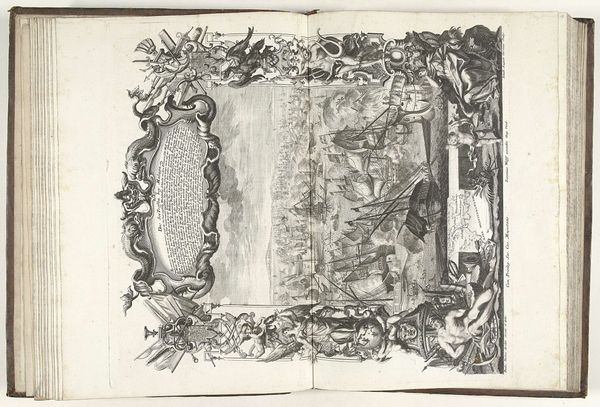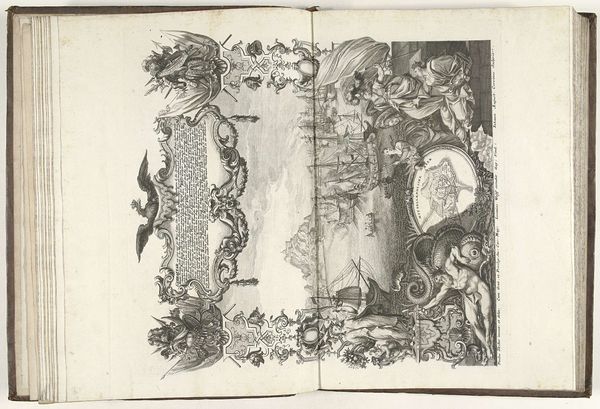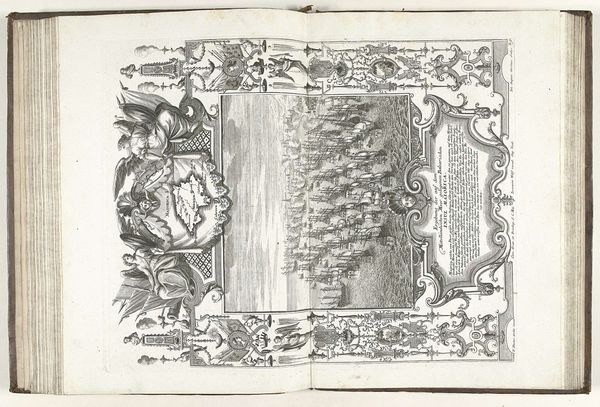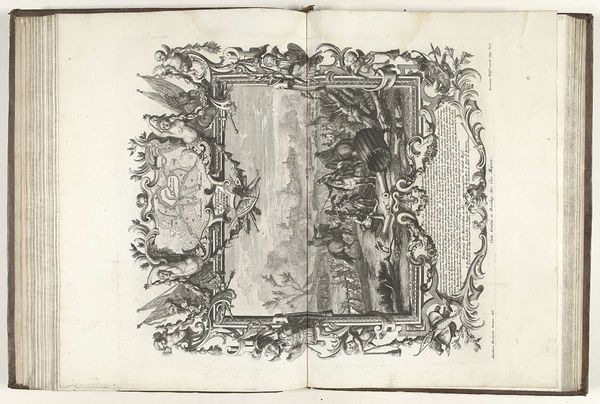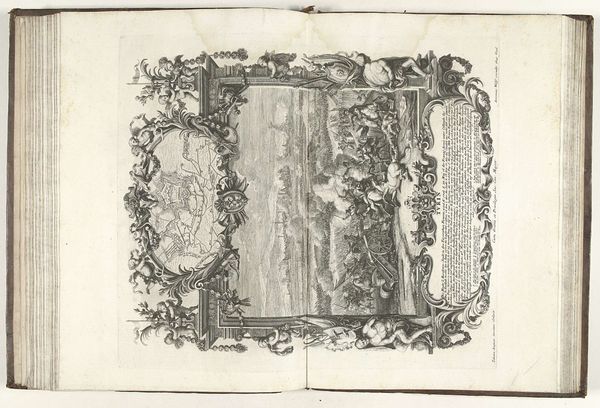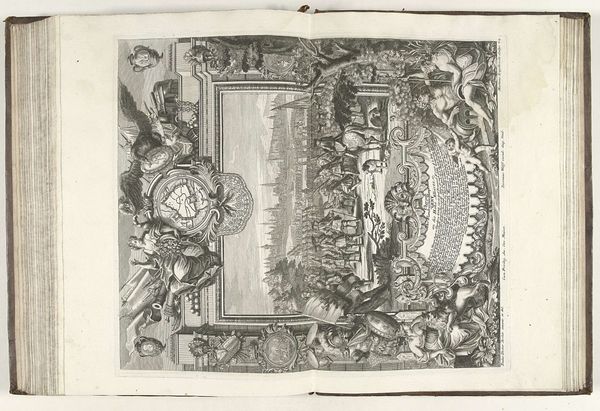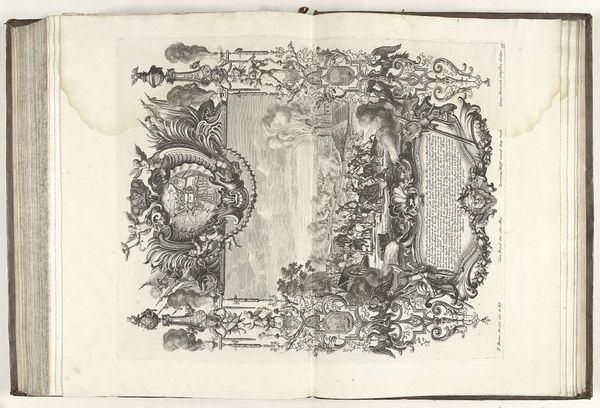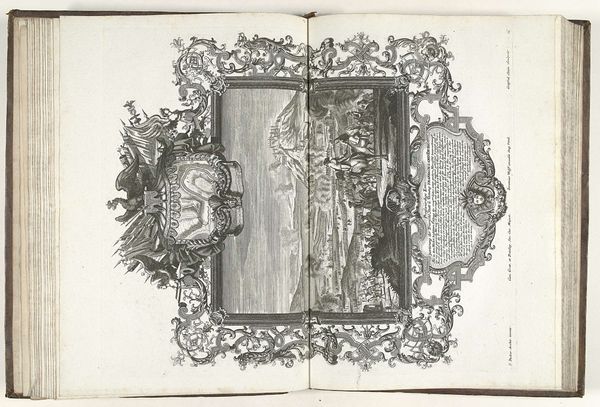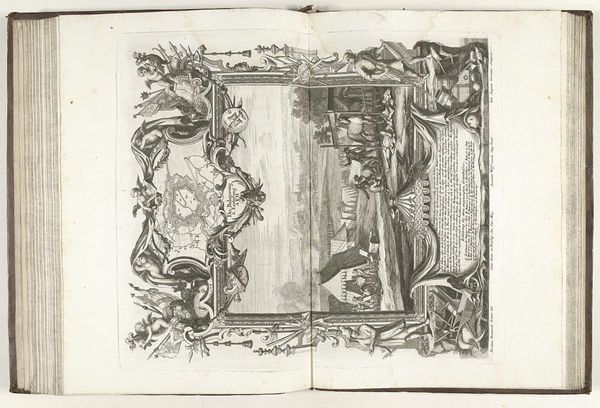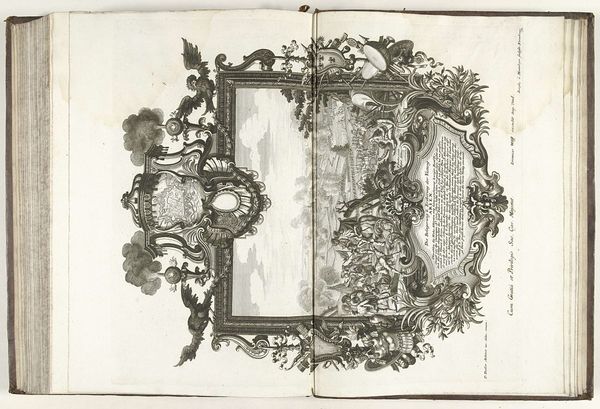
print, engraving
#
baroque
# print
#
landscape
#
cityscape
#
history-painting
#
engraving
Dimensions: height 450 mm, width 402 mm
Copyright: Rijks Museum: Open Domain
Curator: Here we have "Zeeslag in de baai van Vigo, 1702," an engraving created between 1712 and 1715 by Johann August Corvinus, residing here at the Rijksmuseum. Editor: My first impression is pure intricacy. Look at how busy this print is! The eye hardly knows where to land. The greyscale tones give it a somber feel. Curator: The piece commemorates the naval battle of Vigo Bay in 1702. Corvinus utilizes complex symbolism, like the allegorical figures around the main scene. See how they frame the chaos of war with emblems of power, victory, and perhaps even loss. The text on the right acts as a sort of written record, doesn't it? Editor: Exactly, but notice how even the allegorical framing speaks volumes about the material conditions and worldview surrounding the production of prints like these. Engraving requires skilled labor, precise tools, and expensive materials. It's about control—carefully imposing an image and narrative. The symmetry, even within that seeming chaos, speaks of imposed order. Curator: True, but consider that symmetry, or rather near-symmetry, also echoes the psychological urge to create balance amid turmoil. Those swirling patterns and figures reflect, perhaps, a hope for harmony and understanding after conflict. It also hints at cycles of power—rising and falling empires. Editor: The question remains for me, how does that symbolic intent relate to the hands that etched the plate? It speaks to the patronage systems. These artisans, commissioned to produce such works, translated events through very particular economic filters. And in terms of composition, it has more to do with commercial market demands than cultural healing. Curator: Perhaps both hold equal weight. Looking at it again, I can't deny how profoundly that technical craft translates, even centuries later, into this enduring statement about a pivotal moment. Editor: And I’m still marveling at how materials shape perception and meaning—a printed testament of both historical memory and a bygone production era.
Comments
No comments
Be the first to comment and join the conversation on the ultimate creative platform.
